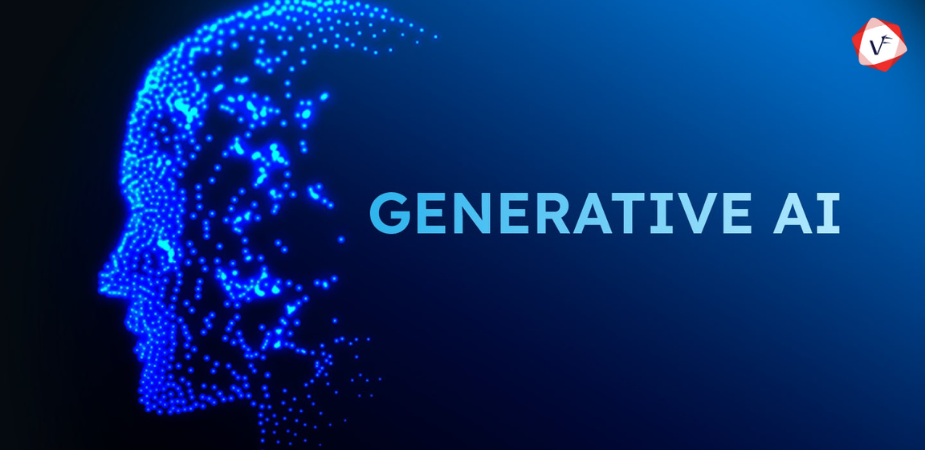Generative AI refers to artificial intelligence that has the ability to create fresh content. This means it can write stories, make pictures, compose music, and even design new products. Unlike traditional Artificial Intelligence, which usually analyzes data and provides insights, generative AI produces something entirely new. Let’s explore how it works, where it can be used, its benefits and limitations, and some best practices for using it.
How Does Generative AI Work?
Generative AI uses advanced algorithms and neural networks to create new content. Here’s a simple breakdown of how it works:
- Training Phase: The AI is trained on a large dataset. For example, a text-generating AI might read millions of articles and books to learn how to write sentences and paragraphs. Similarly, an image-generating AI looks at thousands of pictures to understand shapes, colors, and patterns.
- Learning Patterns: During training, the AI learns the patterns and structures in the data. It figures out how sentences are formed, how stories are told, or how images are composed.
- Generating Content: After training, the AI can create new content based on what it has learned. For instance, if you give a text-generating AI a prompt like “Once upon a time,” it can continue the story in a coherent and creative way. If you ask an image-generating AI to create a picture of a sunset, it can generate a realistic-looking sunset image.
- Feedback Loop: Some generative AIs, like Generative Adversarial Networks (GANs), work in a feedback loop. Both the generator and the discriminator are components of GANs. The discriminator assesses the content that the generator has created. They both learn from each other, improving over time.
What are Use Cases for Generative AI?
Generative AI has many exciting and practical applications across various fields. Here are some examples:
Content Creation:
- Writing: Generative AI can write articles, stories, and even poetry. It helps writers by providing ideas, drafts, or entire pieces.
- Music: AI can compose music in different styles, helping musicians generate new compositions quickly.
Art and Design:
- Artwork: Artists use AI to create unique paintings and digital art. AI can help generate ideas or complete parts of a work.
- Product Design: Designers use AI to create new product designs, from clothing to furniture.
Entertainment:
- Video Games: AI can generate realistic characters, environments, and storylines, making games more immersive.
- Movies: Filmmakers use AI to create special effects or generate entire scenes.
Healthcare:
- Drug Discovery: AI can help design new drugs by predicting how different molecules might interact with diseases.
- Medical Imaging: AI generates synthetic medical images to train other AI systems without using real patient data, protecting privacy.
Customer Service:
- Chatbots: AI chatbots can generate responses to customer queries, providing instant support.
- Virtual Assistants: Assistants like Siri and Alexa use generative AI to understand and respond to user requests.
Education:
- Personalized Learning: AI generates customized learning materials and exercises based on each student’s needs.
- Tutoring: AI can simulate tutoring sessions, helping students learn at their own pace.
What are the Benefits of Generative AI?
Generative AI offers numerous benefits, making it a valuable tool in many areas:
- Creativity Boost: AI can provide new ideas and inspiration, enhancing human creativity. It can suggest new directions in art, writing, and design.
- Time-Saving: AI can automate repetitive tasks, saving time and allowing people to focus on more complex activities. For example, it can quickly generate multiple versions of a marketing campaign.
- Personalization: AI can create personalized content tailored to individual preferences. This is useful in education, marketing, and entertainment, where tailored experiences are highly valued.
- Scalability: Once trained, AI can produce large amounts of content quickly and efficiently. This is especially helpful in industries like advertising, where high volumes of content are needed.
- Innovation: Generative AI can explore new possibilities and solutions that humans might not consider, leading to breakthroughs in various fields.
What are the Limitations of Generative AI?
Despite its potential, generative AI has several limitations and challenges:
- Quality Control: Ensuring the quality of AI-generated content can be difficult. Sometimes, the output might be incorrect, irrelevant, or biased.
- Bias and Fairness: AI can inherit biases from the data it is trained on. If the training data contains biases, the AI-generated content might reflect and perpetuate those biases.
- Ethical Concerns: Generative AI can be used to create deepfakes or misleading information, raising concerns about security and misinformation.
- Plagiarism and Ownership: Determining the ownership of AI-generated content is complex. Questions arise about who holds the rights to the content created by AI and how to address potential plagiarism.
- Job Displacement: Automation through AI might lead to job displacement in certain fields. For example, content creation jobs might be at risk as AI takes over some of the tasks.
Best Practices for Using Generative AI
To use generative AI effectively and responsibly, consider the following best practices:
- Ensure Quality: Regularly review and refine the AI-generated content to ensure it meets quality standards. Use human oversight to catch and correct errors.
- Address Bias: Be aware of potential biases in the training data and take steps to mitigate them. For training AI models, use relevant and different datasets.
- Maintain Transparency: Clearly disclose when content is generated by AI. This helps build trust and allows users to understand the source of the content.
- Respect Ethical Guidelines: Avoid using generative AI for harmful purposes, such as creating deepfakes or spreading misinformation. Follow ethical guidelines and industry standards.
- Collaborate with Humans: Use AI as a tool to augment human creativity and decision-making, rather than replacing humans entirely. Foster collaboration between AI and human experts.
- Protect Data Privacy: Ensure that any data used to train AI models is handled securely and in compliance with privacy regulations. Use synthetic data where possible to protect real user data.
Final Thoughts
Generative AI is a powerful and innovative technology with the potential to transform many aspects of our lives. Its applications are vast and varied, from creating art and music to enhancing education and healthcare. However, it also comes with challenges that need careful consideration and management.
By understanding how generative AI works, recognizing its benefits and limitations, and following best practices, we can harness its potential responsibly and ethically. As we continue to explore and develop this technology, it’s crucial to balance innovation with ethical responsibility, ensuring that AI serves humanity positively.
Generative AI represents a significant step forward in artificial intelligence, offering new possibilities for creativity, efficiency, and personalization. As we move into the future, staying informed and engaged with these developments will be key to shaping a world where AI complements and enhances human capabilities.





